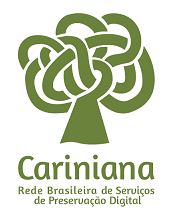Produção de forragem de ramos e rebrotas de maniçoba nativa
DOI:
https://doi.org/10.5433/1679-0359.2017v38n6p3767Palavras-chave:
Árvore forrageira, Intensidade de corte, Manihot glaziovii, Semiárido.Resumo
O crescimento e a produção de forragem de Manihot glaziovii foram avaliados em plantas se desenvolvendo em Itapetim-PE, Brasil, através de um experimento no delineamento em blocos casualizados com 4 tratamentos (intensidades de corte dos ramos: 0, 33, 50 e 100%) para analisar o aumento em altura e diâmetro. Adicionalmente, foram considerados3x2 tratamentos fatoriais (três intensidades de corte dos ramos: 33, 50 e 100%, e dois tipos de material forrageiro coletado: Ramos com diâmetro < 10mm e respectivas rebrotas desses 1 ano após serem cortados) para analisar parâmetros de quantidade e qualidade da forragem. O aumento na altura foi afetado (P < 0,05) pela intensidade de corte dos ramos (0,29, 0,11, 0,43 e -0,04 m planta-1, respectivamente para 0; 33; 50 e 100% de intensidade de corte), enquanto o do diâmetro (3,97mm planta-1) não foi afetado. Houve interação (P < 0,05) entre os fatores estudados para a produção de forragem: as médias foram consideradas semelhantes (P > 0,05) na primeira (ramos) e segunda (rebrotas) coletas para as intensidades de corte 33% (0,66 e 0,75kg de matéria seca planta-1, respectivamente) e 50% (1,40 e 1,73kg de MS planta-1, respectivamente), e diminuiu da primeira para a segunda coleta (P < 0,05) na intensidade de 100% (3,37 e 2,06kg de MS planta-1, respectivamente). Foi observada interação entre os fatores para algumas variáveis de qualidade da forragem: os teores de fibra em detergente neutro se mantiveram constantes (P > 0,05), entre 50,57 e 54,41%, na forragem dos ramos e das rebrotas nas intensidades de corte 33 e 50%, e aumentaram (P < 0,05) para 62,20% nas rebrotas das plantas submetidas a 100% de intensidade de corte; os teores de fibra em detergente ácido aumentaram (P < 0,05) de um patamar em torno de 38,4% para até 46,63%, nas rebrotas das plantas submetidas a 100% de intensidade de corte. Os teores de proteína bruta (entre 8,72 e 10,08%) e extrato etéreo (entre 2,74 e 4,35%) não foram afetados (P > 0,05). O teor de matéria mineral foi maior (P < 0,05) nas rebrotas nas três intensidades de corte, e chegou a 5,9%. Pode-se coletar até 50% dos ramos com Ø < 10mm de Manihot glaziovii e respectivas rebrotas de um ano sem prejudicar a qualidade e a quantidade (até 1,73kg de MS planta-1) da forragem coletada.Downloads
Downloads
Publicado
Como Citar
Edição
Seção
Licença
Copyright (c) 2017 Semina: Ciências Agrárias

Este trabalho está licenciado sob uma licença Creative Commons Attribution-NonCommercial 4.0 International License.
Semina: Ciências Agrárias adota para suas publicações a licença CC-BY-NC, sendo os direitos autorais do autor, em casos de republicação recomendamos aos autores a indicação de primeira publicação nesta revista.
Esta licença permite copiar e redistribuir o material em qualquer meio ou formato, remixar, transformar e desenvolver o material, desde que não seja para fins comerciais. E deve-se atribuir o devido crédito ao criador.
As opiniões emitidas pelos autores dos artigos são de sua exclusiva responsabilidade.
A revista se reserva o direito de efetuar, nos originais, alterações de ordem normativa, ortográfica e gramatical, com vistas a manter o padrão culto da língua e a credibilidade do veículo. Respeitará, no entanto, o estilo de escrever dos autores. Alterações, correções ou sugestões de ordem conceitual serão encaminhadas aos autores, quando necessário.
















